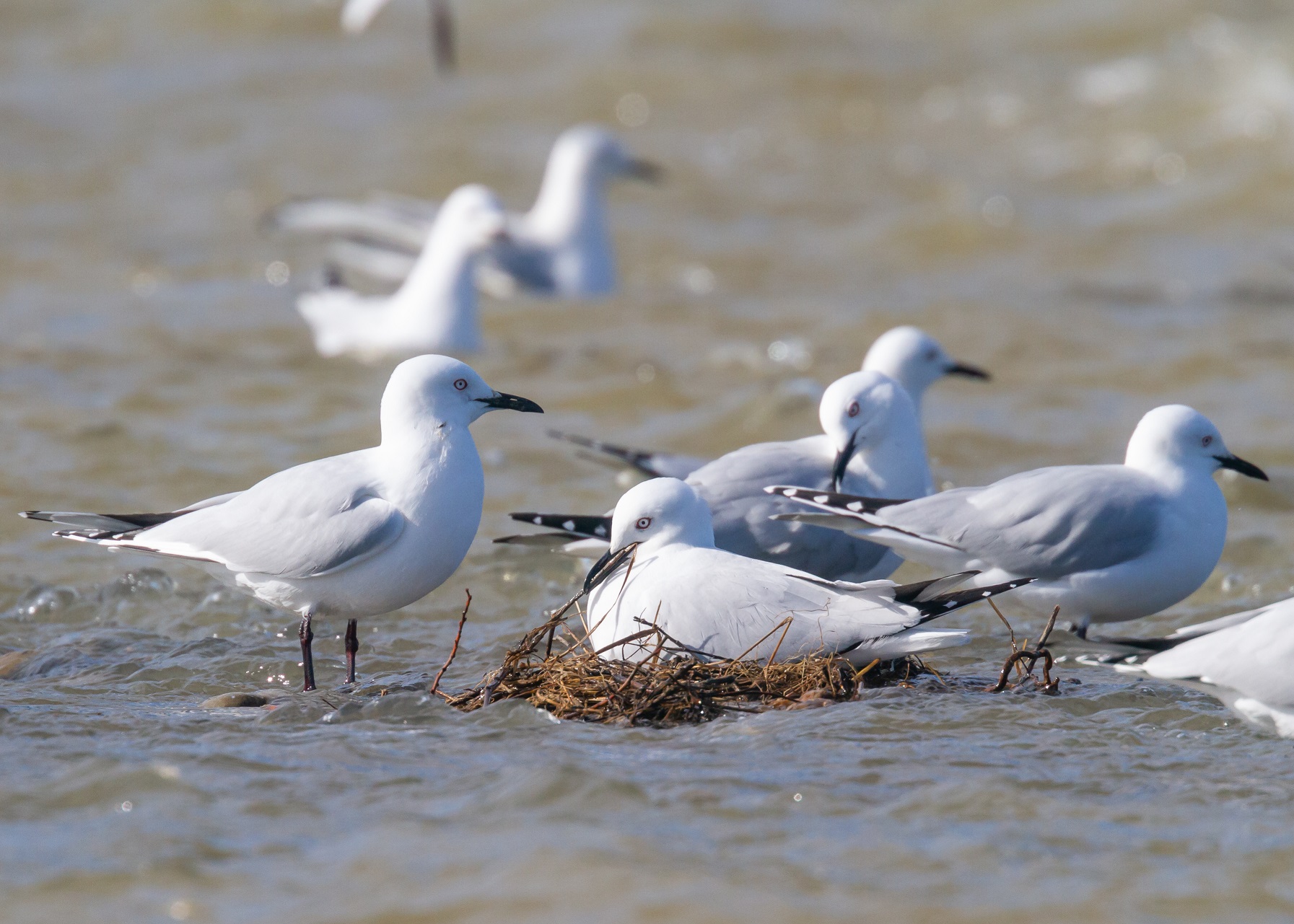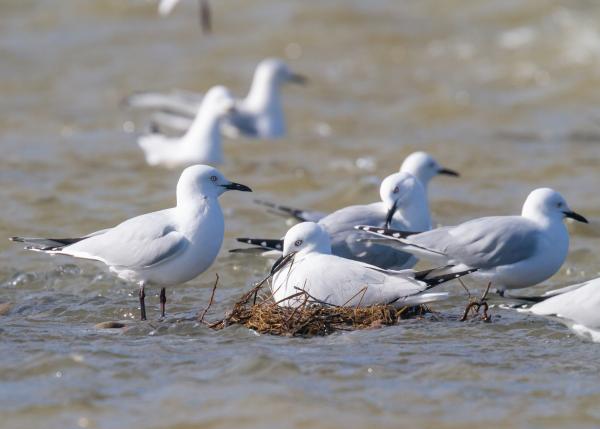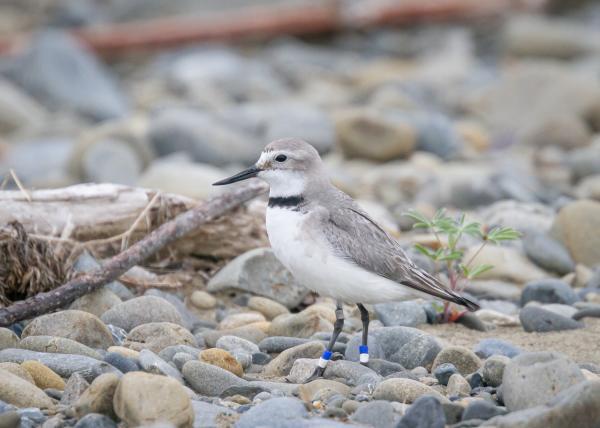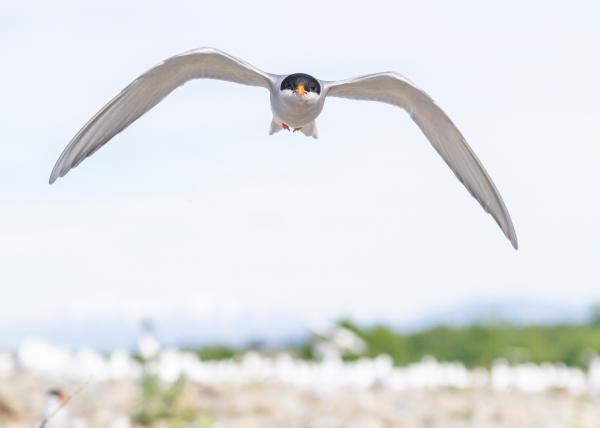KID REPORTERS’ NOTEBOOK
Protecting Rare Birds in New Zealand


Black-billed gulls, an endangered species that can only be found in New Zealand, faced severe flooding in 2018.
The Ashley-Rakahuri Rivercare Group (ARRG) is a nonprofit organization based in North Canterbury, New Zealand. It is devoted to protecting the unique birds living on the Ashley Rakahuri River.
Only 18% of New Zealand’s bird population is not at risk. Pollution, climate change, habitat loss, and other factors pose an increasing threat. Many of the birds that ARRG protects are unique, including the wrybill, the only bird in the world with a sideways beak.
I recently visited the river area, where I spoke with Nick Ledgard, who is chairman of ARRG. “When you retire, you often go back to things that interested you when you were much younger, and that’s what I’m doing,” Ledgard said.
He works with other residents to help preserve the ecosystem, which is called a “braided river,” a network of rivers thick with sediment that are separated by tiny islands.

The wrybill is the only bird in the world with a beak that is bent to the right.
RAISING AWARENESS
Since retiring, Ledgard has teamed up with other volunteers to organize bird-counting surveys and speak about the birds’ plight at schools and public events.
“I really enjoy the work,” Ledgard said, “and we’re so lucky to have that river within five minutes of home.”

Hine with Nick Ledgard, chairman of the Ashley Rakahuri Rivercare Group, and two volunteers
THE DANGER OF VEHICLES
During breeding season, visitors are warned not to disturb the birds. “Vehicles, particularly four-wheel drives, can run over chicks and eggs,” Ledgard explained.
The group sets traps to protect against hedgehogs, rats, weasels, and feral cats. They pose a particular threat to birds during nesting season.
Weeds are another problem. “The birds must have a clean shingle [pile of small, rounded pebbles] to nest on,” Ledgard said. “They need to be able to see a clear horizon. What we have to do is try and clear those away. Floods will clear them away, too, but we can’t rely on floods.”

A black-fronted tern in flight. After breeding, most birds move to the coast where they get their food, including earthworms.
BIRD SURVEY
I attended ARRG’s annual bird survey this year. Volunteers walked along the river, counting the number of birds they saw and writing the numbers on a sheet. This data will help the group determine how they’re helping the bird population.
In 2018, in recognition of ARRG’s hard work, the group won the Australasian Wildlife Management Society’s annual award for Practical Wildlife Management.
As Ledgard and the other group members know, making a positive difference for the birds helps everyone.
